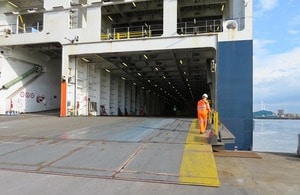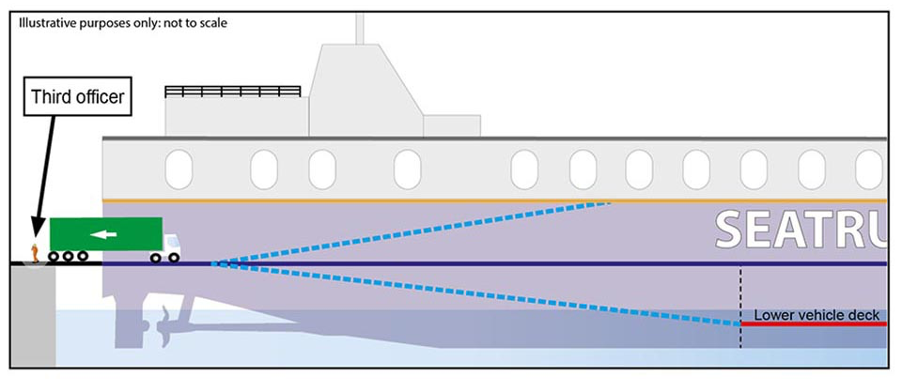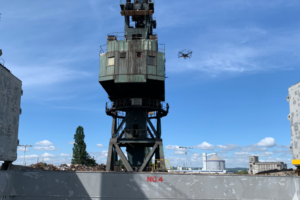Mobile phones a ‘serious concern’ for MAIB – Seatruck Progress accident report
 The stern ramp and yellow painted walkway
The stern ramp and yellow painted walkway
In May 2019, the third officer of ro-ro freight ferry Seatruck Progress was struck and fatally injured by a freight vehicle semi-trailer while standing on the vessel’s stern ramp. The semi-trailer was being pushed ashore by one of the port’s tractor units.
The third officer was facing down the ramp and talking on his mobile telephone when he was struck. He was unaware of the trailer approaching from behind and the tractor unit’s driver was not expecting any pedestrians to be on the stern ramp and could not see the third officer due to the trailer blocking his view ahead.
The tractor unit driver was found to have cannabis in his system, but this was unlikely to have contributed to the accident.
“This tragic accident has highlighted two significant safety issues,” says the Chief Inspector of Marine Accidents.
“The first, is the hazard of using a mobile phone when on duty or in a working environment. Users can too easily become distracted from the tasks they are doing and lose awareness of what is happening around them. This accident occurred on the loading ramp of a ro-ro ferry, however, the use of mobile phones in other hazardous workspaces and on the bridge of ships is becoming a serious concern.
“Secondly, this accident again highlights the importance of separating moving vehicles and pedestrians on the ramps and vehicle decks of ro-ro ferries. Moving vehicles are a constant hazard during loading and discharge, and if physical separation cannot be achieved then robust procedural controls must be put in place to prevent people from being injured or killed.

Driver’s view ahead when pushing a semi-trailer
“Recommendations have been made to reinforce the importance of maintaining the safety of pedestrians when loading and discharging ro-ro cargo, and the UK and IoM marine administrations have been recommended to provide guidance on the dangers of using mobile phones when working in hazardous areas on board ships.”
This is one of several similar accidents in recent years where both maritime and land-based industry best practice guidance have not been met: there was no physical barrier on the stern ramp to segregate vehicles and pedestrians and there were no controls in place to monitor the stern ramp and stop vehicles when pedestrians needed to walk across the area. The accident was the second work-related death in 15 months to have occurred on board ferries operated by Seatruck Ferries Ltd and berthed in Liverpool.











